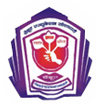
(View Complete Item Description)
Content analysisObjective with specificationTopicGlobalization New terms Interdependence, dissemination,negotiated dramaticreductions in barriers to commerce,NAFTA, EU, Multinational corporations,widening disparity in incomes,Content What is globalizationfeatures of globalizationSome special features of globalization in present History of globalization Cause of globalization 1. Improved of globalization 2. Improve of transportation 3. Free trade agreement 4. Global banking 5. The growth of MNCS Effects of globalization1.increased standard of living2. Access of new market3.Decreased employment and less unsecured job4.widening disparity in incomes5.the effects of globalization on business activity 1. REMEMBERINGPupils remember the concept of globalization. Specification· Pupil recalls the terms Interdependence,· Pupil dissemination, negotiated dramatic.· pupil defines reductions in barriers to commerce.· Pupil lists NAFTA, EU, Multinational corporations.· Pupil memorizes widening disparity in incomes.2. UNDERSTANDING Pupil develops an understanding the concept of globalization. Specification· Pupil explains the concept of globalization.· Pupil illustrates the features of globalization.· Pupil describes the history of globalization.· Pupil interprets the causes of globalization.· Pupil generalizes the effects of globalization.3. APPLYING Pupil applies the remembering an understanding for new and unfamiliar situation.Specification· pupil discover the concept of globalization.· Pupil explains the causes and effects of globalization.· Pupil illustrates the effects of globalization.
Material Type:
Lesson Plan
Author:
Tabassum shaikh Saadique




















